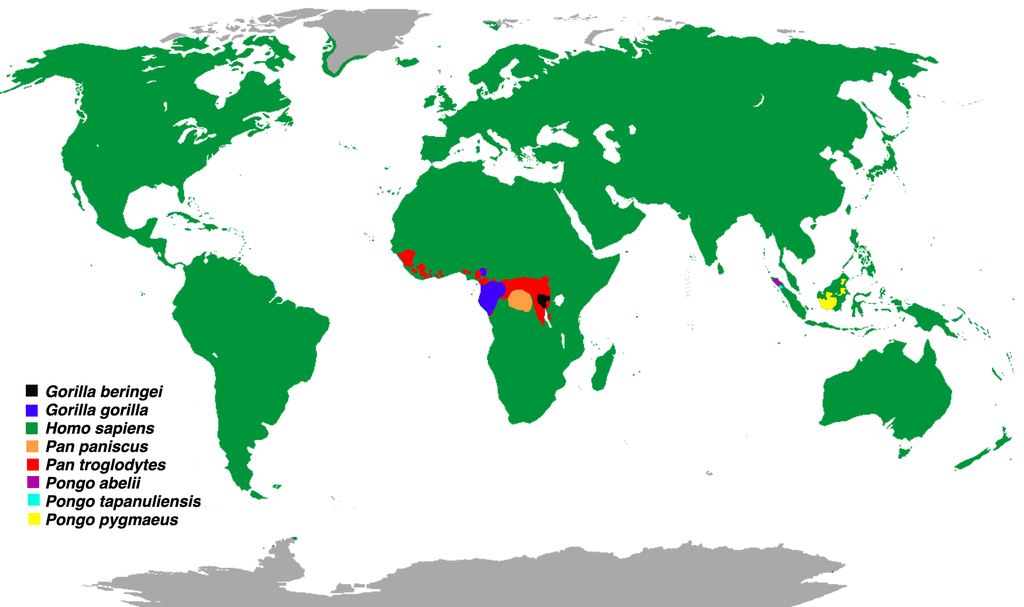Great apes are a group of large primates that share common ancestry with humans. This group includes orangutans, gorillas, chimpanzees, bonobos, and humans. Orangutans are found primarily in the islands of Borneo and Sumatra in Indonesia, with the Bornean and Sumatran species exhibiting slight differences. Gorillas, on the other hand, are divided into Western and Eastern species. The Western gorillas inhabit parts of west and central Africa, while the Eastern gorillas are found in countries like Uganda, Rwanda, and the Democratic Republic of Congo.
Chimpanzees, known for their high level of intelligence and social behavior, are native to the forests and woodlands of West and Central Africa. Common chimpanzees and bonobos are the two species in this genus. The former are distributed across several countries, including Senegal, Ivory Coast, and Uganda, while the latter are confined to the dense forests of the Democratic Republic of Congo.
Humans, the fifth member of the great ape family, have a global presence, inhabiting diverse environments on nearly every continent. Their unique cognitive abilities, tool use, and cultural practices have contributed to their domination of the planet. While these great ape species each have their own distinct habitats and behaviors, they all play important roles in maintaining the delicate balance of their ecosystems. However, the great apes face numerous threats, including habitat loss, poaching, and disease, making conservation efforts crucial to their survival and the preservation of Earth's biodiversity.
Here is the approximate number of individuals for each species of great apes, along with their conservation status.
Western Gorilla (Gorilla gorilla):
Population Estimate: Around 100,000 individuals
Conservation Status: Critically Endangered (Western lowland gorilla subspecies)
Eastern Gorilla (Gorilla beringei):
Population Estimate: Around 5,000 individuals
Conservation Status: Endangered (Both the eastern lowland gorilla and the mountain gorilla subspecies)
Bornean Orangutan (Pongo pygmaeus):
Population Estimate: Around 55,000 individuals
Conservation Status: Critically Endangered
Sumatran Orangutan (Pongo abelii):
Population Estimate: Around 14,000 individuals
Conservation Status: Critically Endangered
Tapanuli orangutan (Pongo tapanuliensis):
Population Estimate: Around 800 individuals
Conservation Status: Critically Endangered
Chimpanzee (Pan troglodytes):
Population Estimate: Around 172,000 individuals
Conservation Status: Endangered (for some subspecies, such as the Central chimpanzee)
Bonobo (Pan paniscus):
Population Estimate: Around 15,000 to 20,000 individuals
Conservation Status: Endangered
Humans (Homo sapiens):
Population Estimate: Around 8 billion individuals
Conservation Status: Least concern
You can learn more about great apes from the following books:

This post may contain affiliate links. As an Amazon Associate, I earn from qualifying purchases.
Comments
Post a Comment